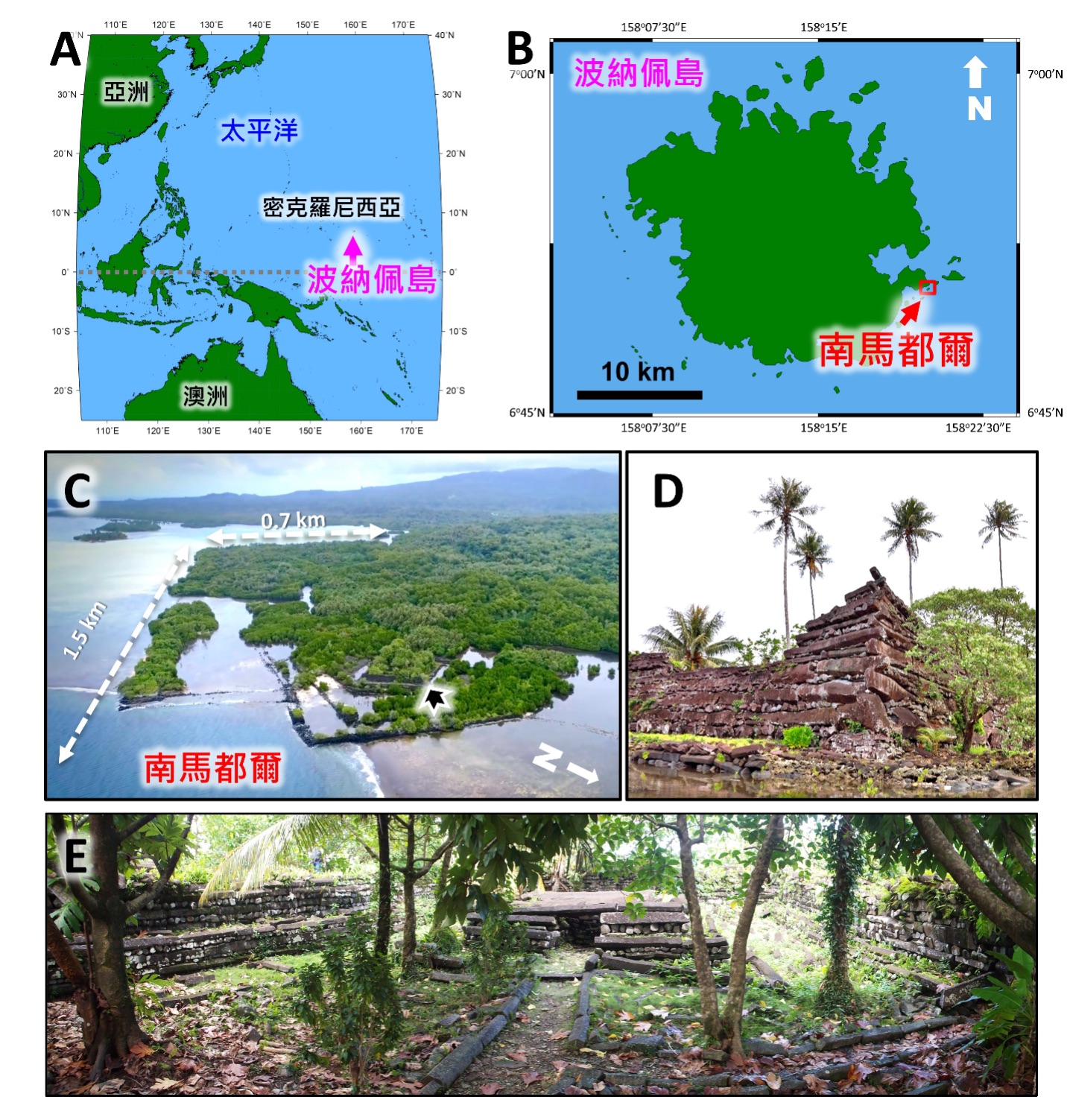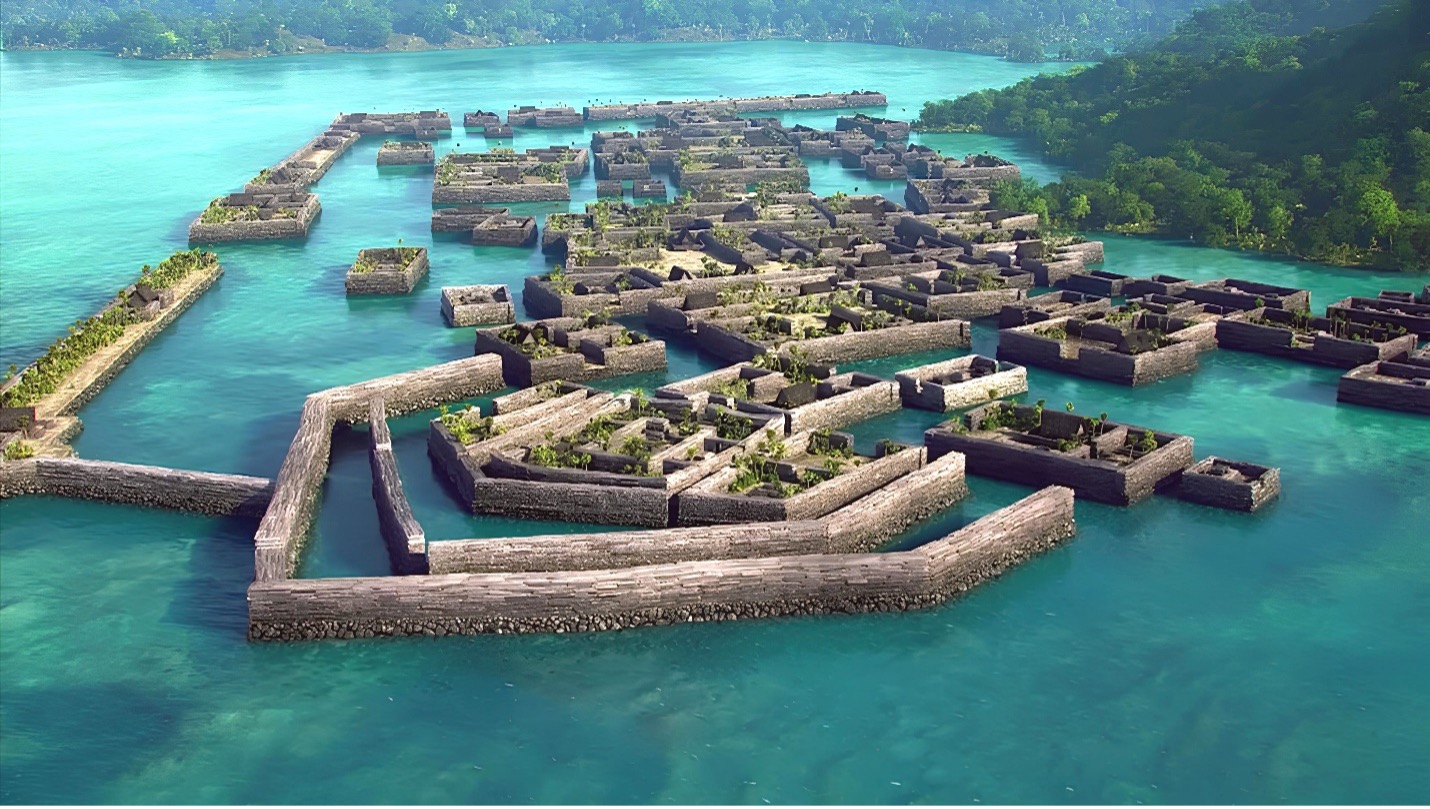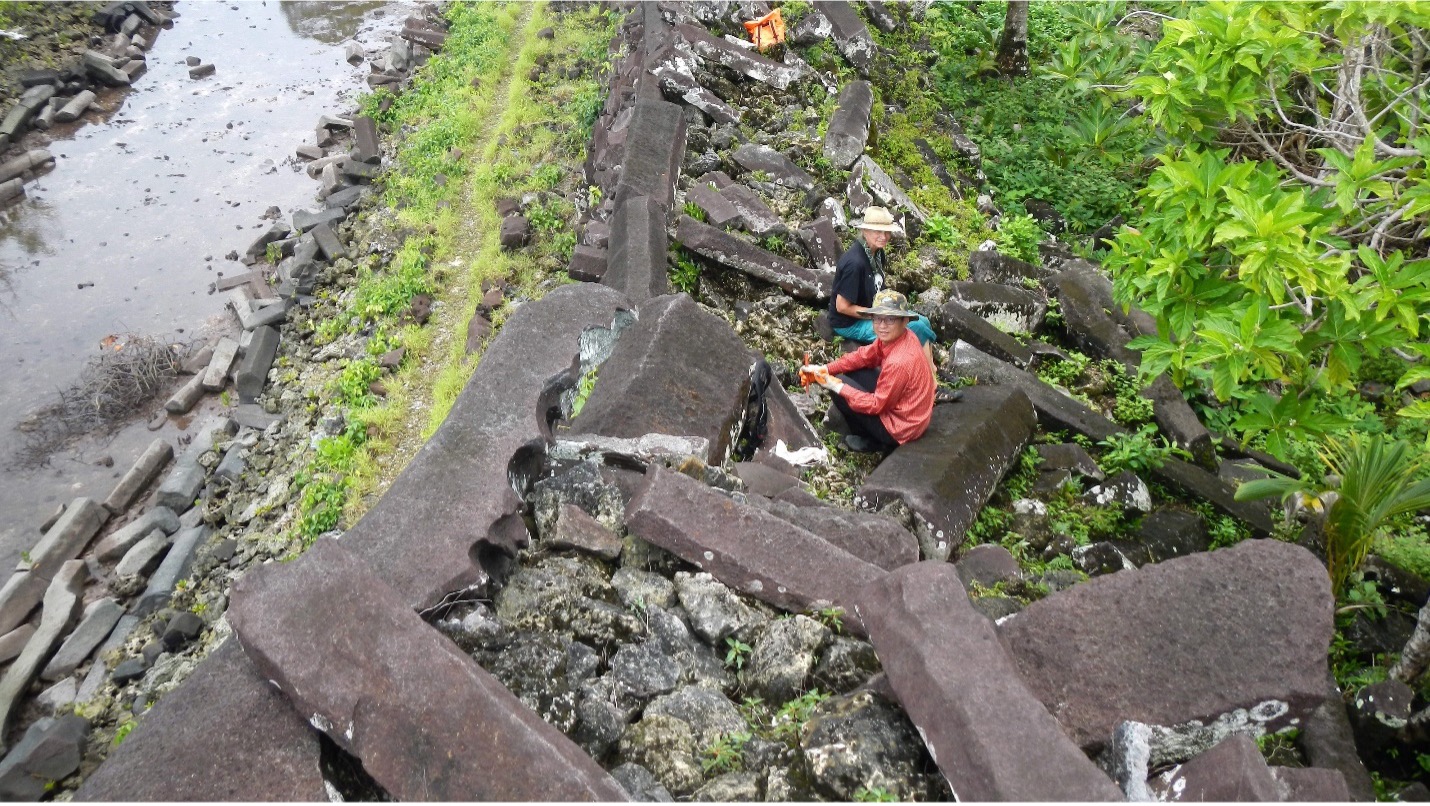A tragic episode of a sinking island 600-yr-ago unfolding globally today
Uncover the history of Nan Madol "Venice of the Pacific"
With global warming causing rising sea levels, have you considered the future of Taiwan and island nations around the world?
On the eastern coast of Pohnpei Island, the capital of Micronesia, lies the abandoned ruin of Nan Madol, once the capital of the ancient Saudeleur Dynasty. Comprising over a hundred artificial islets, it resembles a floating city on the sea (Figures 1-4), referred to as the "Venice of the Pacific". Nan Madol, utilizing nearly a million tons of columnar basalt and coral rubbles and covering approximately 18 square kilometers, is the largest ruin by weight in the Pacific. Despite 200-year studies, a chronology of Nan Madol and the possible impact of climate change on its development were still unclear.
The international team, led by Distinguished Chair Professor Chuan-Chou Shen of the Department of Geosciences at National Taiwan University as the first and corresponding author, uncovered Nan Madol's history by analyzing the ages of the site's coral rubbles. The research found that subsidence-related sea level rise and Pacific climate change posed serious threated to the construction and maintenance of Nan Madol, ultimately leading to the collapse of the dynasty and abandonment of the site. It imparts valuable lessons for our future, especially for island nations. This study was published in PNAS Nexus, a sibling journal to the Proceedings of the National Academy of Sciences (PNAS), on October 1st (1). This study was also highlighted in Editor's Choice column of the top journal “Science” on October 25th (2).
Evidence shows that two major construction phases spanning from the 10th to the 15th century CE can be discerned. The first phase, spanning the 10th-12th century, marked the dynasty’s rise. The second period, spanning from the late 12th to the early 15th century, provides the most substantial evidence for the demise of the island-scale chiefdom. The phases are centuries earlier than previously believed.
Professor Shen pointed out that Pohnpei Island, formed by volcanic magma, has been slowly cooling over time, causing the island's landmass to contract and sink at a rate of 1 millimeter per year. This has led to a relative sea level rise and a gradual retreat of the coastline. Particularly during the second construction phase, the site was already below the average sea level. Additionally, more than a century of severe Pacific climate oscillations, especially during La Niña years, brought strong easterly winds that elevated sea level in the western Pacific. Violent surges from the east frequently attacked the coast, leading to significant seawater intrusion into Nan Madol, damaging compounds and making maintenance and repair a major challenge and heavy burden for the dynasty. Ultimately, accumulated public resentment led to the dynasty’s sudden overthrow. The once-glorious Nan Madol was eventually abandoned.
This case serves as a stark warning for us. During 2020-2022, the Pacific experienced three consecutive La Niña years, with strong easterly winds driving seawater into islands, including those in the Solomon Islands and Papua New Guinea. This led to the destruction of countless homes and infrastructure, causing severe impacts on local communities. With the ongoing intensification of climate oscillations in the Pacific and Indian Oceans, coupled with the global warming induced sea level rise by more than 3 millimeters annually, more islands will face the threat of being submerged and the number of climate refugees is expected to surge dramatically in the coming decades. Curbing global warming to mitigate the induced disasters is our most essential task at present.
This project was led by NTU’s Department of Geosciences. The international collaborators of 23 institutes were from the United States, Australia, and Asia. Current and former graduate students and research assistants from the Department of Geosciences, NTU, were also involved.
(1) Shen, C.-C.#*, Beardsley F. #, Gong S.-Y., Kataoka O., Yoneda M., Yokoyama Y., Hu H.-M., Huang C.-Y., Liu S.-C., Chiang H.-W., Wei H.-L., Chung Y.-C., Jiang L., Lin A. Y.-M., Fox J., David M., Lebehn J., Barnabas J., Kohler G., Richards Z. T., Hobbs J.-P. A., and McCoy M. D. (2024) Links between climatic histories and the rise and fall of a Pacific chiefdom. PNAS Nexus. https://doi.org/10.1093/pnasnexus/pgae399. #These authors contributed equally to this work.
(2) Science Editor’s Choice. (2024) Societal Collapse: Hidden drivers. highlighted in the “IN OTHER JOURNALS” section by Editor Sacha Vignieri. October 25. https://www.science.org/doi/10.1126/science.adu0447.

Figure 1. (A) Location of Pohnpei, the third largest island in Micronesia. (B) Map of Pohnpei showing the location of Nan Madol, capital of the Saudeleur Dynasty. (C) Aerial view of Nan Madol. (D) Northeastern corner of the outer wall of Royal Tomb Complex (4-6 m in height, black arrow in C). (E) Central stone chamber where the Saudeleur chiefs were buried.

Figure 2. A conceptual rendering of a reconstructed Nan Madol.

Figure 3. Researchers conducting surveys and sampling at Nan Madol.

Figure 4. Dr. Chuan-Chou Shen of the Department of Geosciences, National Taiwan University (front) and Dr. Felicia Beardsley, an archaeologist of the University of La Verne (back), collecting coral samples from the outer wall of the royal tomb complex.

Figure 5. Researchers at the HISPEC, Department of Geosciences, National Taiwan University, selecting coral subsamples for uranium-thorium dating.
